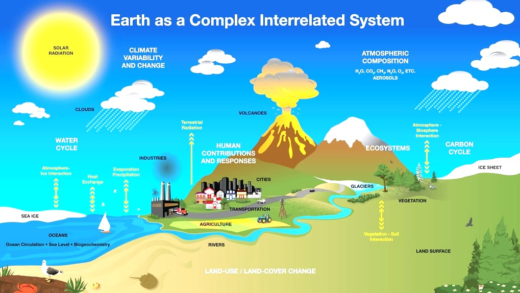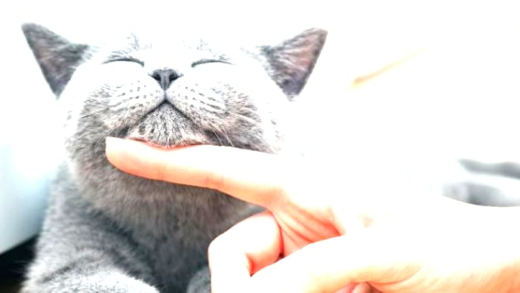Sea slugs are unique creatures known for their vibrant colors and ability to perform photosynthesis by stealing chloroplasts from algae. They thrive in various marine environments, primarily consuming green, red, and brown algae. This adaptation offers them energy in nutrient-poor habitats, reduces reliance on traditional food sources, and enhances their colors. Other marine animals, such as coral polyps and sea turtles, also utilize solar energy in their diets. The study of sea slugs provides insight into energy transfer in ecosystems and highlights their role in biodiversity.
What are Sea Slugs?
Sea slugs are fascinating creatures, scientifically known as nudibranchs. These soft-bodied mollusks are found in oceans worldwide, showcasing a vibrant array of colors and patterns. Their striking appearances can range from bright blues and yellows to intricate patterns that mimic their surroundings, which helps them evade predators.
Sea slugs come in various shapes and sizes, with some measuring just a few millimeters while others can grow up to 30 centimeters long. They lack a shell, which differentiates them from other mollusks like snails. Instead, they have a delicate body covered in a slimy layer, providing protection against harsh environments and predators.
One interesting characteristic of sea slugs is their ability to absorb and utilize the chloroplasts from the algae they consume. This unique adaptation allows them to perform photosynthesis, effectively turning them into solar-powered creatures. This process not only helps them survive but also contributes to their colorful appearances.
Where Can You Find Sea Slugs?
Sea slugs inhabit diverse marine environments, from shallow coastal waters to deep ocean floors. They are commonly found in coral reefs, rocky shores, and seagrass beds. Their distribution spans the globe, with species adapted to various ecosystems, including tropical and temperate waters.
Some popular locations to find sea slugs include:
- Great Barrier Reef, Australia
- Red Sea, Egypt
- Caribbean Sea, the Bahamas
- Pacific Coast, California, USA
These environments provide ample food sources, primarily algae, which are essential for their survival. The vibrant colors of sea slugs can often be seen while snorkeling or diving in these rich ecosystems.
How Do Sea Slugs Steal Algae?
Sea slugs have a remarkable ability to “steal” algae, specifically the chloroplasts, during their feeding process. They consume algae, and instead of digesting these chloroplasts, they incorporate them into their own cells. This process enables sea slugs to harness the energy from sunlight through photosynthesis.
The mechanism works as follows:
- Sea slugs feed on specific types of algae that contain chloroplasts.
- During digestion, they absorb the chloroplasts into specialized cells in their body.
- These chloroplasts remain functional within the sea slug, allowing them to convert sunlight into energy.
This energy theft provides numerous benefits, allowing sea slugs to survive in nutrient-poor environments. By utilizing photosynthesis, they reduce their reliance on traditional food sources, making them unique among marine animals.
Understanding Photosynthesis
Photosynthesis is a vital process that allows plants, algae, and some bacteria to convert light energy into chemical energy. This process primarily occurs in chloroplasts, the cellular structures that capture sunlight. During photosynthesis, organisms use sunlight, carbon dioxide, and water to produce glucose and oxygen. This glucose serves as a crucial energy source for the organism, while oxygen is released as a byproduct.
In nature, photosynthesis plays an essential role in sustaining life. It forms the foundation of food chains, providing energy for herbivores and, in turn, for carnivores. The process is not only crucial for plants but also for the overall health of ecosystems, as it helps regulate atmospheric gases and supports biodiversity.
How Sea Slugs Utilize Photosynthesis
Sea slugs have a unique twist on photosynthesis. By consuming algae, they acquire chloroplasts and incorporate them into their own cells. This allows them to perform photosynthesis, using sunlight to generate energy. The chloroplasts remain functional within the sea slugs, enabling them to produce glucose just like plants do.
When sea slugs absorb sunlight, they convert it into energy, reducing their dependence on traditional food sources. This adaptation not only helps them thrive in nutrient-poor environments but also enhances their vibrant colors. The ability to harness sunlight for energy is what sets sea slugs apart from many other marine animals.
Why is it Called ‘Going Solar’?
The term “going solar” refers to the process of utilizing solar energy for sustenance, much like solar panels convert sunlight into electricity. In the case of sea slugs, this phrase emphasizes their unique ability to harness sunlight through the chloroplasts they have “stolen” from algae. This solar-powered lifestyle allows them to survive in environments where food is scarce.
By incorporating chloroplasts from algae, sea slugs effectively become solar-powered creatures, tapping into a renewable energy source. This not only aids in their survival but also illustrates an incredible adaptation in the animal kingdom. It’s a prime example of how some animals have evolved to exploit energy sources in innovative ways.
Types of Algae Sea Slugs Steal
Sea slugs primarily feed on various types of algae, which provide them with the necessary chloroplasts for photosynthesis. Some of the most common types of algae that sea slugs consume include:
- Chlorophyta (Green Algae): This group includes popular algae like Cladophora and Ulva, known for their vibrant green color and high chlorophyll content.
- Rhodophyta (Red Algae): Species such as Gracilaria and Porphyra are often targeted by sea slugs due to their rich nutrient profile.
- Brown Algae: While less common, some sea slugs also feed on brown algae like Sargassum, which can provide additional energy sources.
This diversity in diet not only supports their unique adaptation to photosynthesis but also enhances their ability to thrive in different marine environments. By targeting specific algae, sea slugs can maximize their energy intake and maintain their colorful appearances.
Benefits of This Adaptation
The adaptation of sea slugs to utilize stolen chloroplasts offers several significant benefits. Firstly, it allows them to thrive in nutrient-poor environments where food is scarce. This reliance on photosynthesis means that sea slugs can sustain themselves even when traditional food sources are limited.
Additionally, this adaptation enhances their vibrant colors, making them less appealing to predators while also attracting potential mates. The ability to generate energy from sunlight reduces competition for food, as sea slugs can occupy ecological niches that other marine animals cannot. This unique lifestyle exemplifies how evolution can lead to innovative survival strategies in the animal kingdom.
Other Animals Using Similar Methods
Besides sea slugs, other animals also utilize similar energy-gathering methods. For example:
- Coral Polyps: These animals form symbiotic relationships with algae, allowing them to harness energy from sunlight.
- Some Sea Anemones: Like corals, sea anemones can also host algae, benefiting from the energy produced through photosynthesis.
- Sea Turtles: Certain species of sea turtles consume algae directly, contributing to their energy needs.
These examples demonstrate the diverse ways in which marine animals have adapted to exploit solar energy, showcasing the interconnectedness of life in ocean ecosystems.
Implications for Ecosystem Energy Transfer
The ability of sea slugs and similar organisms to utilize solar energy has profound implications for understanding energy transfer in ecosystems. By incorporating photosynthetic capabilities, these animals contribute to the flow of energy within marine food webs.
This adaptation allows for a more efficient use of resources, as energy derived from sunlight can support multiple trophic levels. The presence of solar-powered creatures like sea slugs can enhance biodiversity and stability within ecosystems, highlighting the importance of energy transfer in maintaining healthy marine environments.
Studying Sea Slugs’ Behavior
Researchers study sea slugs to gain insights into their unique behaviors and adaptations. Field studies often involve observing their feeding patterns, habitat preferences, and interactions with other marine organisms. Advanced techniques such as molecular biology and genetic analysis help scientists understand how sea slugs incorporate chloroplasts from algae and the implications of this process for their survival.
Through these studies, scientists can learn more about evolutionary biology and the ecological roles of sea slugs in marine environments, providing valuable information for conservation efforts and ecosystem management.
Surprising Facts About Sea Slugs
Sea slugs are full of surprises! Here are some intriguing facts that might amaze you:
- Some species can produce toxins to deter predators, making them not only beautiful but also dangerous.
- Sea slugs can regenerate lost body parts, similar to some species of lizards.
- They exhibit a wide variety of colors and patterns, which serve as camouflage or warning signals.
These fascinating creatures continue to be a subject of study and admiration for marine biologists and enthusiasts alike, showcasing the wonders of nature’s diversity.





Comments are closed.